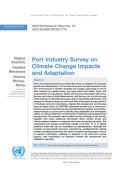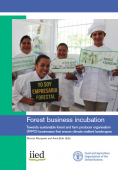



Forest business incubation is a support process that accelerates the successful development of sustainable businesses in forest landscapes. There is much to develop. The aggregate gross annual value from smallholder producers within forest landscapes may be as much as US$1.3 trillion.
Forest Business Incubation: Towards Sustainable Forest and Farm Producer Organisation (FFPO) Businesses that Ensure Climate Resilient Landscapes demonstrates how to overcome business incubation challenges in remote forest landscapes. These may include low densities of educated entrepreneurs, high logistical costs, scarce infrastructure to differentiate products, and few capable business mentors. The book includes an introduction to the forest business incubation service delivery model, detailed case studies are presented of attempts to deliver business incubation services in forest landscapes, an analysis of the data presented by the case studies and some observations and conclusions about how best to develop forest business incubation in the service of both forests and people.
Coastal adaptation investment presents clear opportunities for social welfare improvements, particularly for densely populated areas with high levels of economic activity. This policy brief, Leveraging Public Finance for Coastal Adaptation, provides insights into several mechanisms for leveraging public finance of coastal adaptation. Leveraging public finance refers to achieving increased outputs with the same amount of public investment. Given constraints on public finance, leveraging public finance is increasingly important for achieving coastal adaptation. Promising mechanisms for leveraging public investments in coastal adaptation include generating market revenues or increasing tax revenue through projects that produce co-benefits such as new land or improved environmental quality. A further mechanism for leveraging public investments is through long-term contracting of the private sector, which can improve the efficiency of adaptation project delivery. Each mechanism is illustrated through an example analysed in the GREEN-WIN project.
